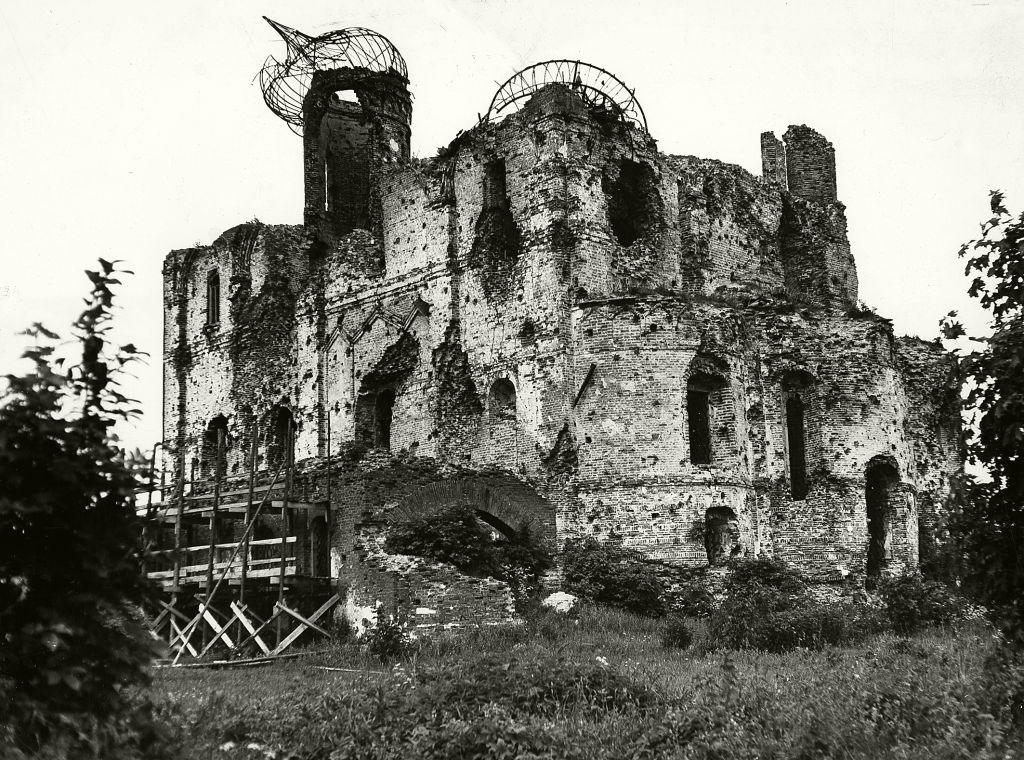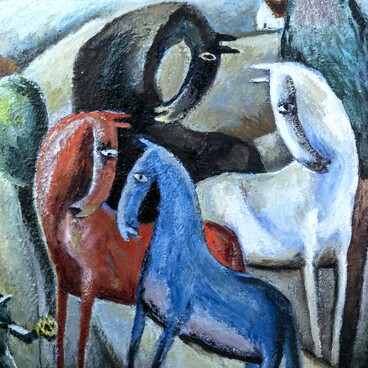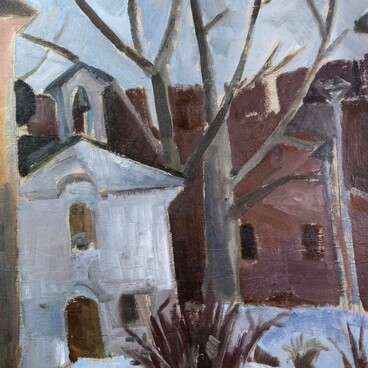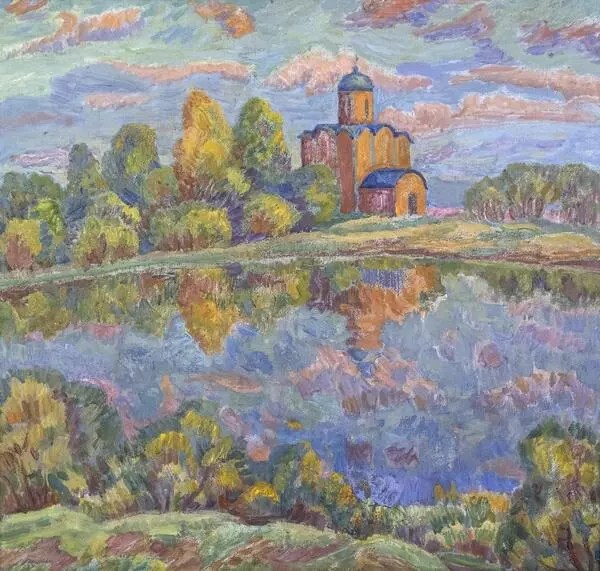Varlaam of Khutyn has been one of the most beloved and revered saints of the Russian North since the 13th century (and of Russia in general — since the middle of the 15th). In his youth, having taken monastic vows, he retreated as a hermit to the Khutyn hill near Novgorod. That place was believed to be “damned”, but the saint managed to rid it of evil demons and built a stone Transfiguration Church there (1192), and then founded the Khutyn Monastery.
Only the foundation has been preserved from the original church. It was discovered during excavations in 1981–1982 inside the 16th-century cathedral. The unique architectural ensemble of the monastery was formed in the 15th century. The gate stone churches of Anthony the Great (1417) and Elijah the Prophet (1418) and the St. Varlaam Church with a belfry (1445) were added to the Transfiguration Church.
Four stone churches in one monastery were a rare phenomenon for that time and indicated that the monastery was greatly revered.
The exact location of the churches is unknown, but there is some indirect evidence in this regard. The Khutyn icon “The Vision of Sexton Tarasius” of the late 16th century depicts both gate churches: one in the southern part of the structure, the second in the western one, facing the Volkhov River. This second church, according to the inventory of 1642, was the church of Elijah the Prophet. It was the only one mentioned in the inventory: probably, the church of Anthony the Great had been dismantled by that time.
A new central church of the monastery, also consecrated in honor of the Transfiguration of the Savior, was erected in 1515 by decree of Vasily III as a symbol of the spiritual unity between Novgorod and Moscow.
In 1535, under Tsar Ivan the Terrible, an octagonal church of St. Gregory of Armenia with a gable roof and one dome “for the bells” was built to the south of this cathedral. It was surrounded by an octagonal gallery with a tent (gable) roof.
The St. Varlaam Church with a refectory, which still stands today, was built in 1549–1551. This church, the Transfiguration Cathedral and the bell tower were the core of the architectural ensemble, finally formed in the 16th century.
In the painting by Vasily Makarovich Chekhonadsky, the Khutyn Monastery seems to be in absolute harmony with nature. Vasily Chekhonadsky was born in Kazakhstan, where he studied to become a drawing teacher, and later he completed art restoration courses in Moscow. After that, he became a resident of Novgorod, and greatly contributed to the Novgorod Museum-Reserve. Vasily Makarovich restored the feasts tier of the iconostasis of the St. Sophia Cathedral. His colleagues called it an eternal monument of the artist.
Only the foundation has been preserved from the original church. It was discovered during excavations in 1981–1982 inside the 16th-century cathedral. The unique architectural ensemble of the monastery was formed in the 15th century. The gate stone churches of Anthony the Great (1417) and Elijah the Prophet (1418) and the St. Varlaam Church with a belfry (1445) were added to the Transfiguration Church.
Four stone churches in one monastery were a rare phenomenon for that time and indicated that the monastery was greatly revered.
The exact location of the churches is unknown, but there is some indirect evidence in this regard. The Khutyn icon “The Vision of Sexton Tarasius” of the late 16th century depicts both gate churches: one in the southern part of the structure, the second in the western one, facing the Volkhov River. This second church, according to the inventory of 1642, was the church of Elijah the Prophet. It was the only one mentioned in the inventory: probably, the church of Anthony the Great had been dismantled by that time.
A new central church of the monastery, also consecrated in honor of the Transfiguration of the Savior, was erected in 1515 by decree of Vasily III as a symbol of the spiritual unity between Novgorod and Moscow.
In 1535, under Tsar Ivan the Terrible, an octagonal church of St. Gregory of Armenia with a gable roof and one dome “for the bells” was built to the south of this cathedral. It was surrounded by an octagonal gallery with a tent (gable) roof.
The St. Varlaam Church with a refectory, which still stands today, was built in 1549–1551. This church, the Transfiguration Cathedral and the bell tower were the core of the architectural ensemble, finally formed in the 16th century.
In the painting by Vasily Makarovich Chekhonadsky, the Khutyn Monastery seems to be in absolute harmony with nature. Vasily Chekhonadsky was born in Kazakhstan, where he studied to become a drawing teacher, and later he completed art restoration courses in Moscow. After that, he became a resident of Novgorod, and greatly contributed to the Novgorod Museum-Reserve. Vasily Makarovich restored the feasts tier of the iconostasis of the St. Sophia Cathedral. His colleagues called it an eternal monument of the artist.






